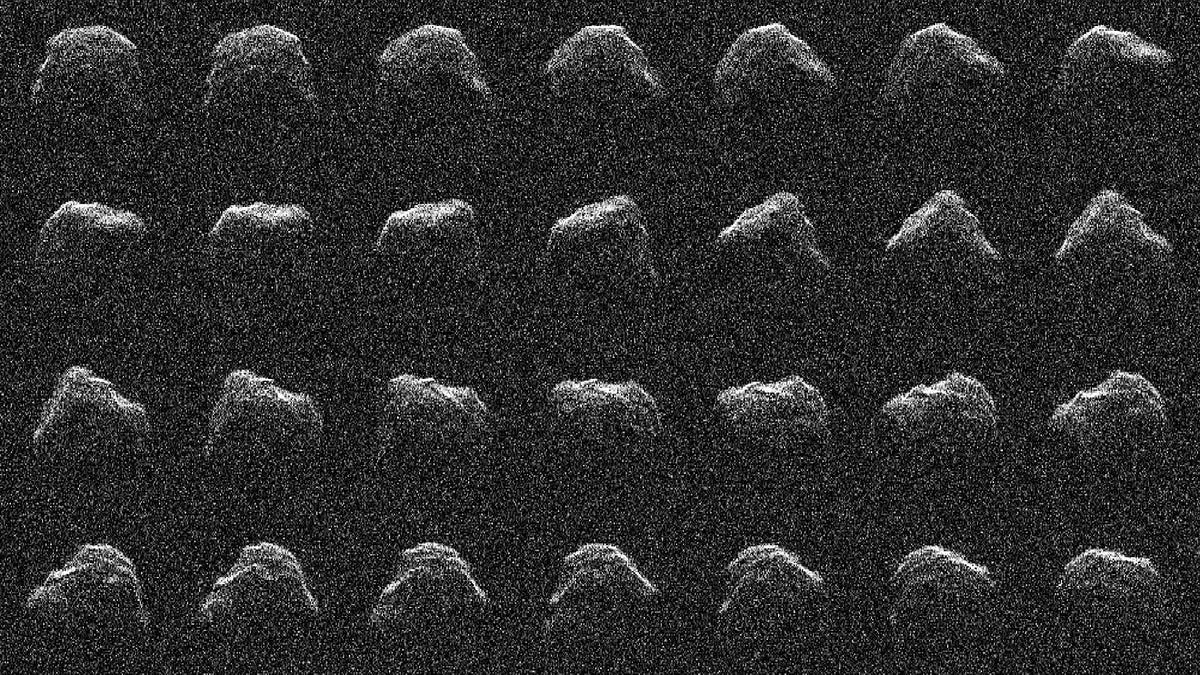
The interstellar object 3I/ATLAS made its closest approach to the Sun, known as perihelion, today, October 29, 2025, at 7:47 AM Eastern Time. This significant event was confirmed by the JPL Horizons system, which accurately fits its trajectory with a timing uncertainty of only a few minutes. The perihelion of 3I/ATLAS marks a crucial moment in our observation of this fascinating interstellar object.
While the perihelion event is a pivotal point in 3I/ATLAS's journey, we currently lack visibility into what occurred during this time due to the object being obscured by the Sun from our terrestrial telescopes. This limitation raises questions about whether any significant phenomena took place as it reached its closest point to our star.
In the past, radar systems equipped with radio telescopes have successfully imaged various asteroids and comets within our Solar System. This technique could also be applied to large interstellar objects like 3I/ATLAS. For instance, the first radar observation conducted on an asteroid occurred in 1968 when 1566 Icarus was imaged. Calculations suggest that if Earth had been situated on the opposite side of its orbit six months ago or will be again in six months, we could have potentially imaged 3I/ATLAS. At that hypothetical position, the object would have passed within approximately 54 million kilometers of Earth, making it detectable by existing radar systems.
Assuming a minimum diameter of 5 kilometers for 3I/ATLAS, scientists could have captured detailed measurements of its size and images revealing its three-dimensional shape through multiple radar snapshots taken during its rotation, which occurs every 16.2 hours. However, the observed radio flux diminishes significantly with distance, making radar detection unfeasible even at a distance of 269 million kilometers from Earth, projected for December 19, 2025.
While 3I/ATLAS is most likely a natural comet, it has been assigned a rank of 4 on the Loeb scale, indicating some anomalies that merit further investigation. On this scale, a rank of 0 denotes a definitely natural interstellar object, while a rank of 10 signifies a distinctly technological one. The eight notable anomalies that contribute to this classification include the following:
Its trajectory is aligned within 5 degrees of the ecliptic plane of the planets around the Sun, with a likelihood of only 0.2%. In July and August 2025, 3I/ATLAS exhibited a sunward jet (anti-tail), which appears to be a genuine phenomenon rather than an optical illusion. The nucleus of 3I/ATLAS is approximately a million times more massive than 1I/`Oumuamua and a thousand times more massive than 2I/Borisov, while it is also moving faster, with a likelihood of less than 0.1%. Its arrival trajectory was meticulously fine-tuned to approach within tens of millions of kilometers of Mars, Venus, and Jupiter, while remaining unobservable from Earth at perihelion; the likelihood of this happening is just 0.005%. The gas plume surrounding 3I/ATLAS contains an unusually high nickel concentration compared to iron, with a nickel-to-cyanide ratio exceeding that of all known comets, including 2I/Borisov, with a likelihood below 1%. The gas plume consists of only 4% water by mass, a stark contrast to the primary composition of familiar comets. 3I/ATLAS displayed extreme negative polarization, a phenomenon unprecedented among known comets, with a likelihood below 1%. It originated from a direction closely aligned with the famed radio "Wow! Signal," with a likelihood of 0.6%.The combined probabilities of these anomalies yield a cumulative likelihood of less than one in ten quadrillion (1016), raising intriguing questions about the true nature of 3I/ATLAS.
As we continue to monitor 3I/ATLAS, Congresswoman Anna Paulina Luna is actively assisting in the release of HiRISE images obtained on October 2, 2025, for the scientific community. If 3I/ATLAS demonstrates any signs of maneuvering, releases mini-probes, or transmits radio signals, it could indicate a technological origin. Other potential signs of technology include artificial lights or excess heat from an engine.
On the other hand, if 3I/ATLAS is indeed a natural comet, the heating it experiences at perihelion—770 watts per square meter—could cause it to fragment, resulting in a potentially spectacular display of gas and dust as it breaks apart.
Determining the true nature of 3I/ATLAS is crucial, as the implications of discovering alien technology would be monumental. Our most advanced rocket, Starship, is a mere hundred times smaller than 3I/ATLAS, suggesting that if this object is indeed technological, its creators possess capabilities far beyond our own. This prompts us to compare the technological scenarios of 3I/ATLAS with the imaginative narratives found in science fiction films. Ultimately, the pursuit of knowledge drives us to collect as much data as possible to unravel the mysteries surrounding this extraordinary interstellar object.